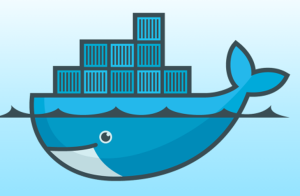
Larry Smarr: The Future of Distributed Computing Is Here

Larry Smarr, Distinguished Professor Emeritus at UCSD's CSE
Larry Smarr may have stepped back from full-time work in the Computer Science and Engineering Department at the University of California, San Diego, but that doesn’t mean he’s slowing down. In fact, since his schedule has opened up, he’s now free to do other things, such as evangelizing the benefits of distributed computing for local startup Kazuhm. Datanami recently caught up with Smarr to get his take on how new technologies like Kubernetes and 5G are changing the distributed computing game.
Smarr, who received his PhD. in physics from the University of Texas at Austin in 1975, has had the sort of academic career that most computer scientists can only dream of. In 1983, he famously submitted a short 10-page report to the National Science Foundation called “A Center for Scientific and Engineering Supercomputing.” Better known as the Black Proposal (for the color of the cover), it was the first unsolicited proposal accepted by the NSF, and led to the foundation of five supercomputer centers, at Cornell, Illinois, Princeton, San Diego, and Pittsburgh.
As the founding director of the National Center for Supercomputing Applications (NCSA) at the University of Illinois, Champaign-Urbana, Smarr played a role in ushering in the modern Web with the development of Mosaic, a Web browser released in 1993 that built on the HTTP and HTML protocols that Tim Berners-Lee created three years earlier. Smarr moved to California in 2000 and helped found the California Institute for Telecommunications and Information Technology (Calit2) at UCSD and then UC Irvine.
In June, Smarr stepped back from full-time duty at UCSD and serving as the director of Calit2 and took the title Distinguished Professor Emeritus. As the principal investigator on three large computing research proposals, however, Smarr has not entirely divorced himself from UCSD. In fact, the school has called him back to “active duty” to work on these projects (so long as it doesn’t consume in excess of 43% of the time, per the bureaucratic rule book).
Freed from the day-to-day requirements of his former job, Smarr signed up to be an evangelist for distributed computing with a local San Diego outfit called Kazhum. While he has no official position with the Analytic Ventures-funded startup, he clearly sees potential in the company, which develops a platform that utilizes Docker containers and Kubernetes to enable customers to distribute computing workloads to any device, including smaller devices on the IoT.
According to Smarr, the computing world is on the cusp of major changes, even if it doesn’t necessarily feel that way to many people.
“When these things come–and they come on in exponentials–people begin to hear the words, but they don’t get there’s going to be major transformation,” Smarr says. “Go back to file sharing with Napster. All the executives at the record companies were sending out lawyers to old ladies and the kids. They didn’t get that the world was going to completely change and they were going to become extinct in about three years. Or Blockbuster. Or Netflix.
“I’ve lived through so many of these transformations, and I just think the day of ubiquitous distributed computing is finally here,” he continues. “It isn’t like it hasn’t been here for decades. That’s what I, of course, have been doing for decades. But it’s getting to the point where it’s actually becoming mainstream.”
While many computing advances emerged from academia in decades past, we’re now seeing more technological breakthroughs from companies in the private sector, Smarr points out. Google, for instance, has been party to many of the advances since 2000, including the Google File System, which Doug Cutting and Mike Cafaraella used as the inspiration for the Hadoop Distributed File System; Big Table, a NoSQL database built atop the Google File System; and Spanner, a relational database built atop Big Table.
Smarr identified Kubernetes–a resource scheduler for containers created by Google to manage its internal computing resource and released as an open source project in 2014–as an especially disruptive technology, and one that will help to usher in the next generation of distributed computing.
“To me, the containers are just an extraordinary advance because what you always needed in a distributed system was a mobile way for your software to run around in distributed system, and then execute when it found a host that it could sit on,” Smarr explains. “In other words, you’re not doing RPC [remote procedure calls]. You’re not doing remote log-in on that computer to be able to use it, which is what we had to do forever. You let the software worry about that.”
For decades, companies have needed a system that could identify all the computing resources in the organization. But it’s only been in the past few years, with Docker and Kubernetes, such systems have been available and practical to use, according to Smarr.
“I think it’s the biggest change in distributed computing since Mosaic, and more importantly since Tim Berners-Lee and CERN wrote down the HTML and HTTP protocols,” Smarr says. “That unleashed an enormous capability that we didn’t know was there. Now 2 billion people per day update their Facebook page.”
Many companies that want to move their applications to the cloud have had to “containerize” their software–i.e. adapt it to run within a container (usually Docker). Those that have done that work have benefited from the increased flexibility that cloud computing brings (although it’s not necessarily cheaper as Smarr points out).
The cloud is a homogenous computing environment, with Linux on X86 being the norm, even for Microsoft Azure. But with tools like Kazuhm, which works with heterogenous devices spanning Linux, Windows, Mac, VMware, and other operating environments for servers, desktops, laptops, smart phones, tablets and IoT devices, companies now have a way to manage their entire IT infrastructure using containers and Kubernetes.
“It’s not obvious to me that Kubernetes is an appropriate way to orchestrate containers in a normal enterprise. It’s a wonderful thing if you go, say, between the clouds or anything else,” Smarr says. “But I’m also sort of struck by the number of folks who haven’t yet understood that containers change everything and they’re still trying to figure out, ‘You mean I’ve got to containerize? What the hell does that mean?’
“We’re on that part of the learning curve where there’s still an awful lot of very smart, savvy IT people who haven’t made the connection,” he continues. “One of the things that really helps people is you have something like Kazuhm where it’s a tool that you can go into your existing enterprise– you don’t have to change any of your stuff–and it will actually map out that enterprise that you own but you maybe don’t know.”
Smarr says we’re on the cusp of another breakthrough, around connected devices and the IoT. The rapid increase in the capabilities of system-on-a-chip designs are enabling companies to place more powerful devices in more locations in the real world. As the 5G rollout brings fast network access with low latencies, the potential to leverage all that previously isolated computing power will open up new business opportunities.
“One of the things that we think are not on people’s radar yet is just how rapidly IoT processors are gaining in capacity in speed and complexity,” Smarr says. “What I see coming is this partnership between the cloud and an exponentially larger set of machine intelligent sensors on the edge of the net.”
With Calit2, Smarr was involved with WIFIRE, a project that used remote sensors to monitor for wildfires in San Diego County. The project includes a high-speed wireless grid that connects 60 backcountry stations, where optical sensors use machine learning algorithms trained on large neural nets to identify smoke plumes. This is an example of how distributed computing applications will be deployed in the future, he says.
“You’re doing a bunch of training on a neural net for what does a smoke plume look like. You don’t want to do that on the camera. You want to do that on the cloud with a zillion instances of images, and then you want to deploy that trained, weighted net into a low-energy, fast device on the edge,” Smarr says.
“Well, if you actually look at those devices, how they’re executing, many of them are becoming quite powerful,” he continues. “Right now we think of the server room as the heavy weight IT. And then we have all these hundreds or thousands of laptops. That’s lightweight. Now imagine you’ve got tens to hundreds of thousands of IoT devices. That’s the next layer coming.”
With a wide deployment of 5G antennas and many connected devices with increasingly fast processors and useful memory footprints, companies will essentially have their own private cloud at their disposal. With Kubernetes and containers, and software like Kazuhm’s handling the low-level technical details of distribution of workloads and interrupts, companies will be equipped to use that private cloud to do useful work on the massive amount of data they’re collecting.
We’re in the midst of “an invisible rising tide of new computing parallelism,” Smarr says. “It’s like somehow we did a phase change and dissolved all the barriers between all of our computing devices with containers.”
Smarr has been on the forefront of these kind of phase changes before. He points out that, when he helped start Calit2 in 2000, the group’s byline was “The Internet moving to the physical world.” That was before Wi-Fi was widely available, he points out, and three years before users started accessing the Internet on their cell phones.
“It’s kind of scary to live long enough to see your prophecies coming true,” Smarr says. “I do thank the Lord that that I’ve lived this long so that I can see some of this happening. But it was inevitable. And as it happens, as you get these hugely disruptive things happening, whether it’s the Internet or the Web or social media, people are still stuck in the older world. As William Gibson said, the future is already here. It’s just unevenly distributed.”
Related Items:
Inside One VC Firm’s Hands-On Approach to AI
UCSD Peers Through Big Data Prism































